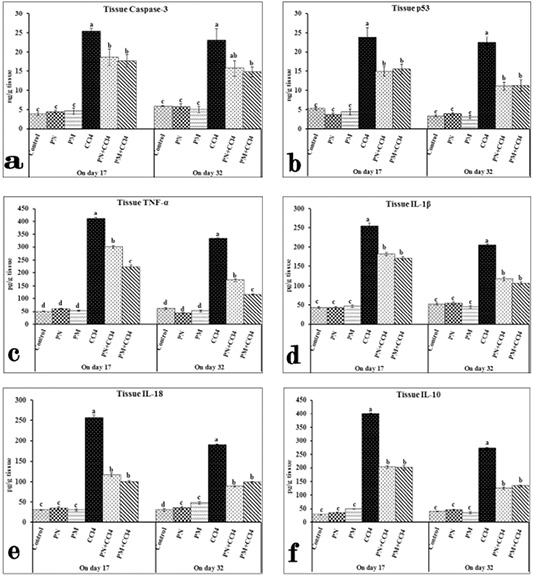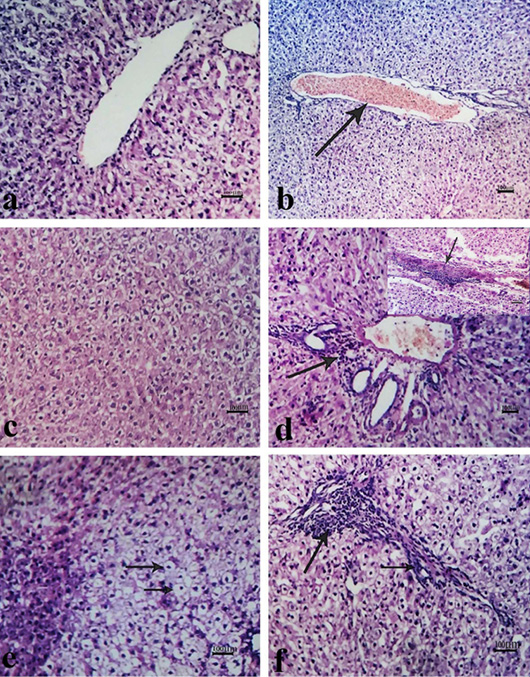Comparative Effects of Phyllanthus niruri and Plantago major in Carbon Tetrachloride Intoxicated Rats
Comparative Effects of Phyllanthus niruri and Plantago major in Carbon Tetrachloride Intoxicated Rats
Asmaa Khamis1, Osama Abdalla1, Mohamed Hashem2, Noha Abdelnaeim1*
Protective effects of Phyllanthus niruri (PN) and Plantago major (PM) on CCl4 intoxicated rats. (A) Tissue Caspase-3; (B) Tissue P53; (C) TNF-α; (D) IL-1β; (E) IL-18; (F) IL-10. Data show the mean ± SEM (n= 10). Columns with different superscripts refer to significant differences (P ≤ 0.05) between the groups.
Liver sections of rats on day 17 of the experiment showing (a, b, c) normal hepatic tissue. Moderate blood vessel congestion (arrow), perivascular edema, bile duct hyperplasia, and degenerated hepatocytes (d). A mild focal area of fibroblastic proliferation (arrow) along with mild to moderate vacuolar degeneration of hepatocytes (e). Mild vacuolation of hepatocytes (arrow) (f). (a) control group; (b) Phyllanthus niruri (PN)group; (c) Plantago major (PM) group; (d) CCl4 group; (e) PN-CCl4 group; (f) PM-CCl4 group.
Liver sections of rats on day 32 of the experiment showing (a, b, c) fairly normal hepatic tissue in addition to mild congestion (b). Moderate congestion, bile duct hyperplasia (arrow), degenerated hepatocytes, and severe focal fibrosis (arrow in the window) (d). Mild vacuolation of hepatocytes (arrow) (e). A focal area of fibroblastic proliferation along with moderate hepatocytes vacuolation (arrow) (f). (a) control group; (b) Phyllanthus niruri (PN) group; (c) Plantago major (PM) group; (d) CCl4 group; (e) PN-CCl4 group; (f) PM-CCl4 group.








